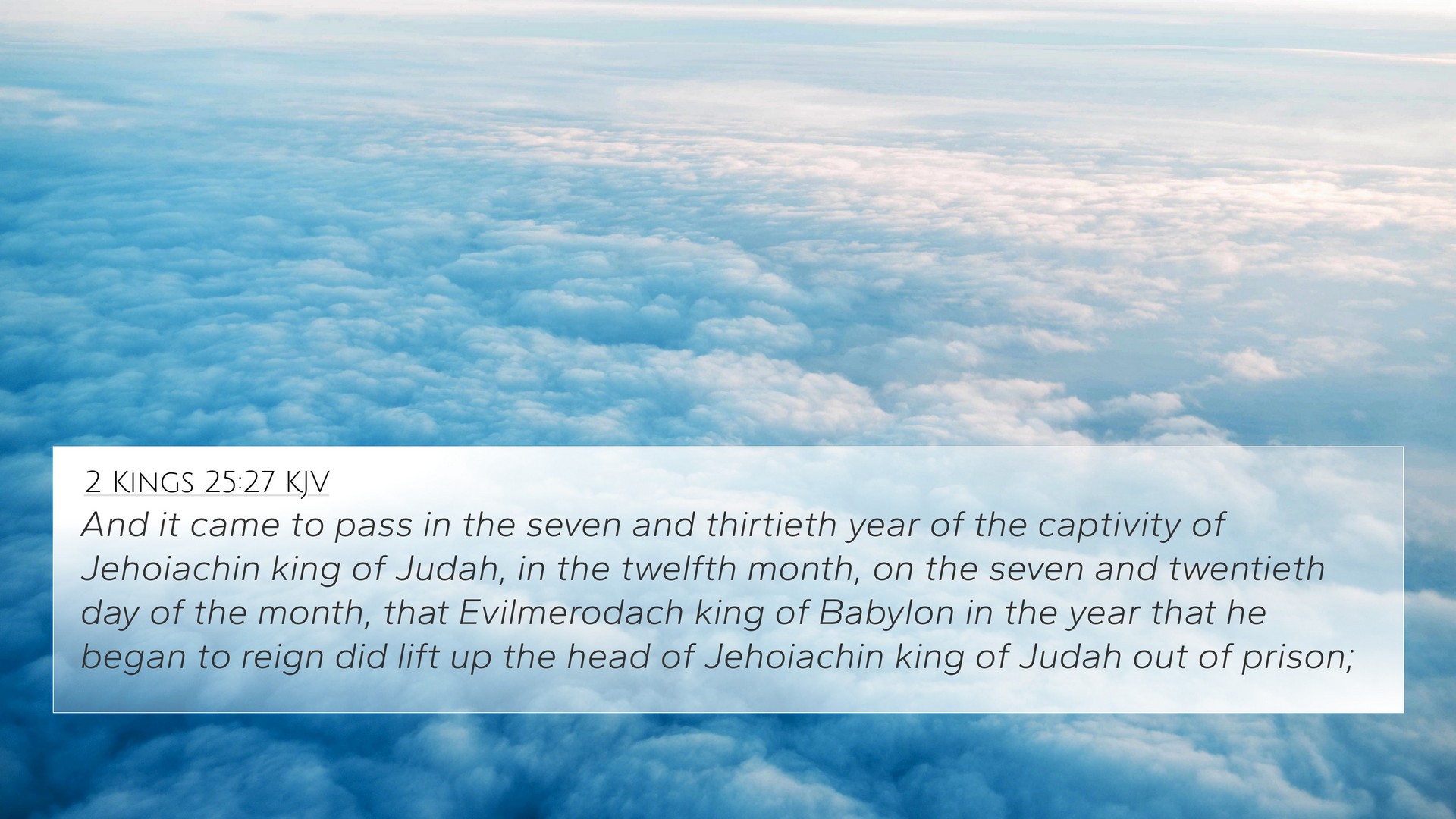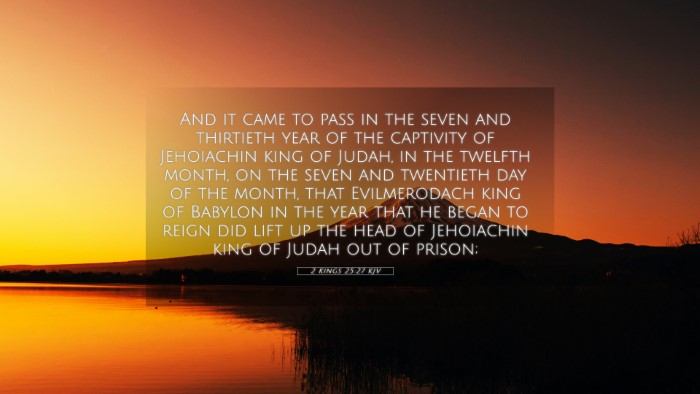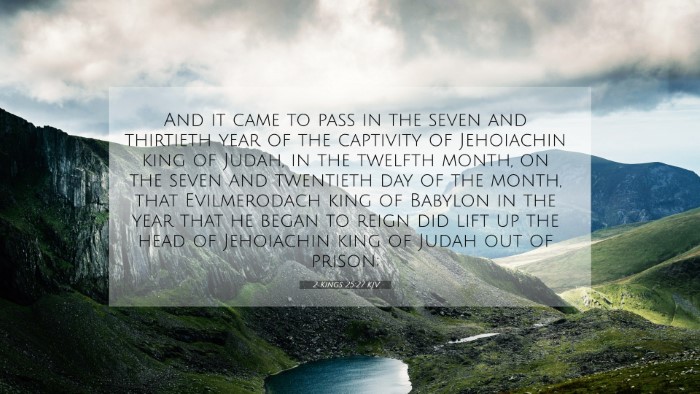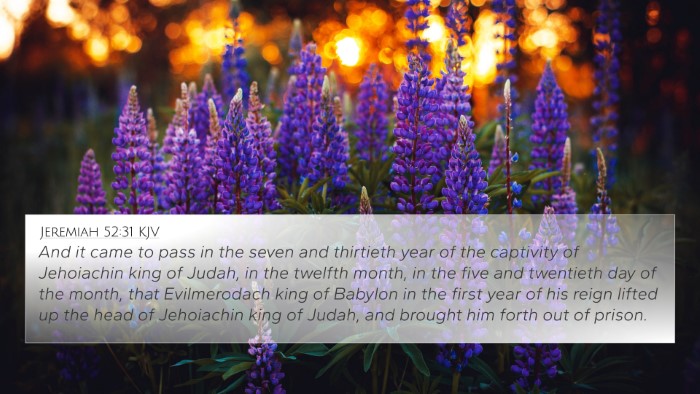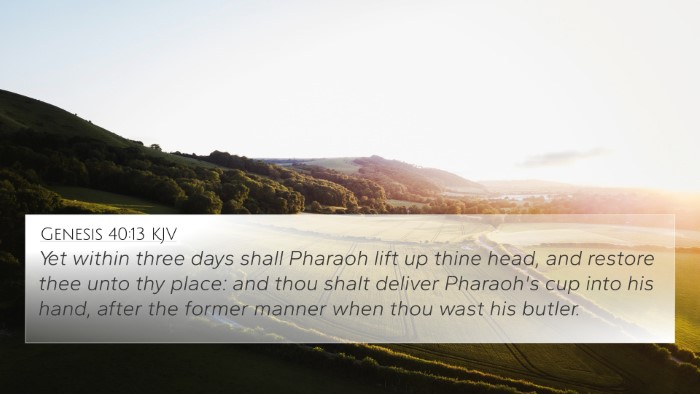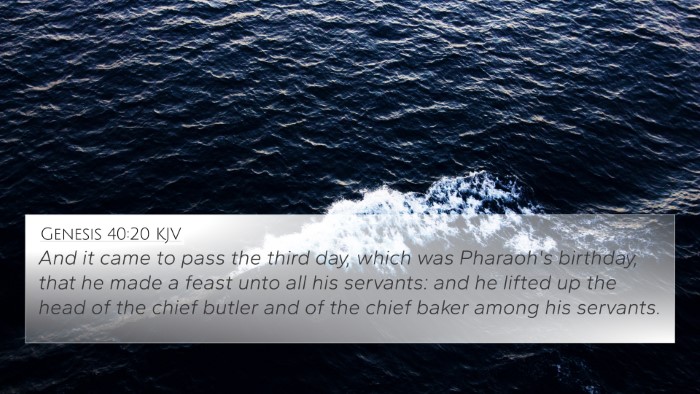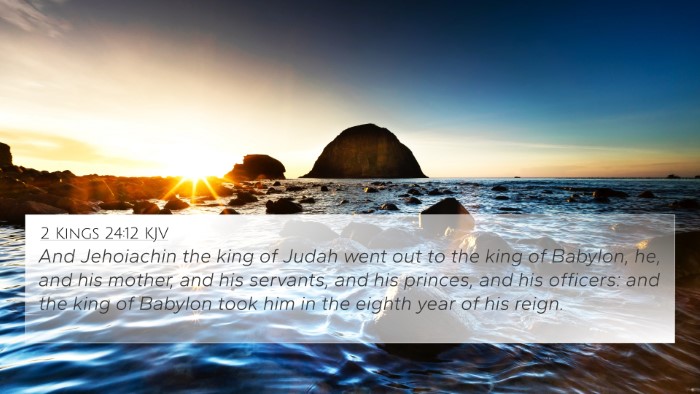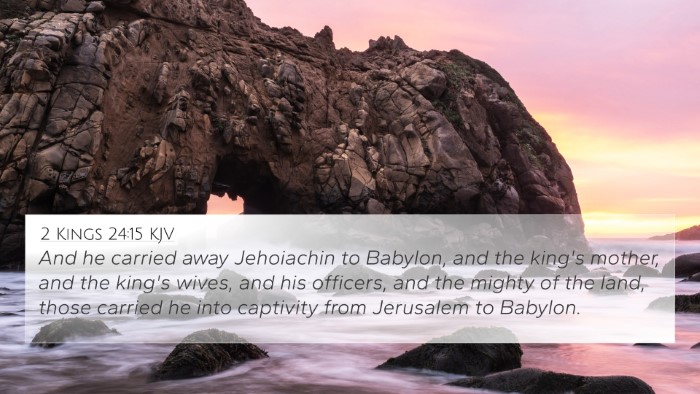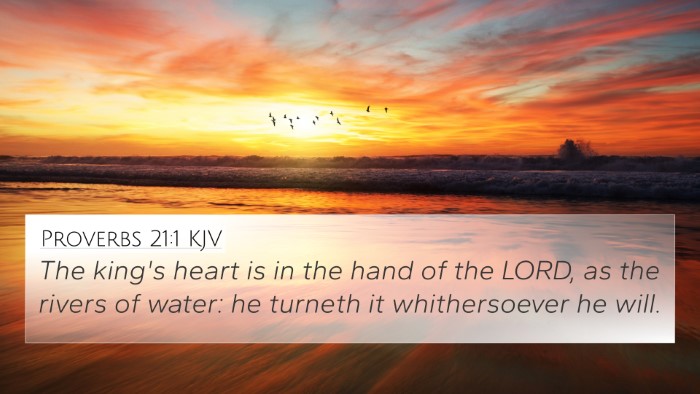Meaning of 2 Kings 25:27
2 Kings 25:27 states: "And it came to pass in the thirty-seventh year of the captivity of Jehoiachin king of Judah, in the twelfth month, on the twenty-seventh day of the month, that Evil-merodach king of Babylon in the year that he began to reign did lift up the head of Jehoiachin king of Judah out of prison." This verse marks a significant moment in the history of Israel, highlighting themes of hope, restoration, and divine sovereignty.
Contextual Background
The context of this verse is critical in understanding its implications. Jehoiachin, the king of Judah, had been in captivity in Babylon after the fall of Jerusalem. The verse indicates a turning point not only in his life but also in the history of the Jewish people. After nearly four decades of imprisonment, he is remembered and elevated. This event signifies God's mercy and the potential for restoration even amidst great despair.
Commentary Insights
- Matthew Henry:
Henry emphasizes the providence of God in Jehoiachin's release. He notes that despite long suffering, Jehoiachin was not forgotten by God, illustrating divine faithfulness. This act of lifting the king's head symbolizes the renewal of hope and the possibility of reconciliation with God's people.
- Albert Barnes:
Barnes highlights the political changes in Babylon and the shift in leadership that allowed for Jehoiachin's release. He suggests that Evil-merodach’s act demonstrates God's control over nations and kings, fulfilling prophetic promises regarding Judah’s restoration.
- Adam Clarke:
Clarke offers insights into the chronological setting of the release, linking it to the broader narrative of exile and return. He emphasizes the emotional and spiritual significance of Jehoiachin's elevation as a representation of hope for all exiled Israelites, foretelling future restoration.
Theological Implications
This verse is intertwined with several theological themes that resonate throughout the Bible:
- God's Sovereignty: The verse illustrates God’s sovereignty in human affairs, as He orchestrates events that lead to the liberation of His people.
- Hope and Restoration: Jehoiachin’s release serves as a reminder that, despite current circumstances, God can restore and redeem.
- Remembrance: It signifies that God remembers His covenant with His people, even when they face dire situations.
Cross-References
To better understand and interpret 2 Kings 25:27, the following Bible verses are noteworthy cross-references that convey similar themes of hope, restoration, and God's promise:
- Jeremiah 52:31-34: This passage discusses Jehoiachin’s eventual release and restoration, providing further details about his time in Babylon.
- Isaiah 40:1-2: A message of comfort for God’s people, promising their sins have been paid for and reinforcing the theme of restoration.
- Lamentations 3:22-23: God's mercies are renewed every morning, exemplifying the enduring hope offered by God.
- Ezekiel 37:21-22: God promises to gather the people of Israel and restore them, echoing themes of unity and renewal.
- Romans 8:28: Paul declares that God works all things for good for those who love Him, emphasizing divine providence.
- Revelation 21:4: God’s promise of wiping away tears signifies ultimate restoration and creation of a new order.
- Psalm 126:1-3: The psalmist speaks of restoration from captivity, drawing a parallel with Jehoiachin's experience.
Connecting Themes Through Cross-Referencing
When analyzing 2 Kings 25:27, a comparative Bible verse analysis reveals beautiful connections between the Old and New Testament that showcase God's consistent nature:
- Thematic Bible Verse Connections: The overarching theme of restoration is prevalent in various scriptures; for example, Isaiah and Jeremiah both convey messages of hope post-exile. A detailed cross-reference between Gospels also highlights instances where Jesus fulfills the Old Testament prophecies related to restoration.
- Inter-Biblical Dialogue: The connection of Jehoiachin's release to New Testament themes of redemption signifies continuity in God's salvific plan.
Tools for Bible Cross-Referencing
Utilizing tools for Bible cross-referencing is essential for deepening understanding. Resources such as a Bible concordance or cross-reference Bible study guides can assist in identifying connections between these verses. Here are several methods:
- Bible Reference Resources: Use comprehensive Bible cross-reference materials for thorough exploration of narratives and themes.
- Cross-Referencing Bible Study Methods: Employ techniques like thematic studies or verse comparisons to uncover deeper meanings.
- Identifying Connections Between Old and New Testament: Focus on scriptures that demonstrate the fulfillment of Old Testament prophecies in the New Testament.
Conclusion
In conclusion, 2 Kings 25:27 serves as a pivotal verse underscoring the themes of hope, restoration, and God's unwavering faithfulness. Through careful examination and cross-referencing, one can unearth the deep connections that bind Biblical texts together, revealing the consistent narrative of God’s redemptive work throughout history.
